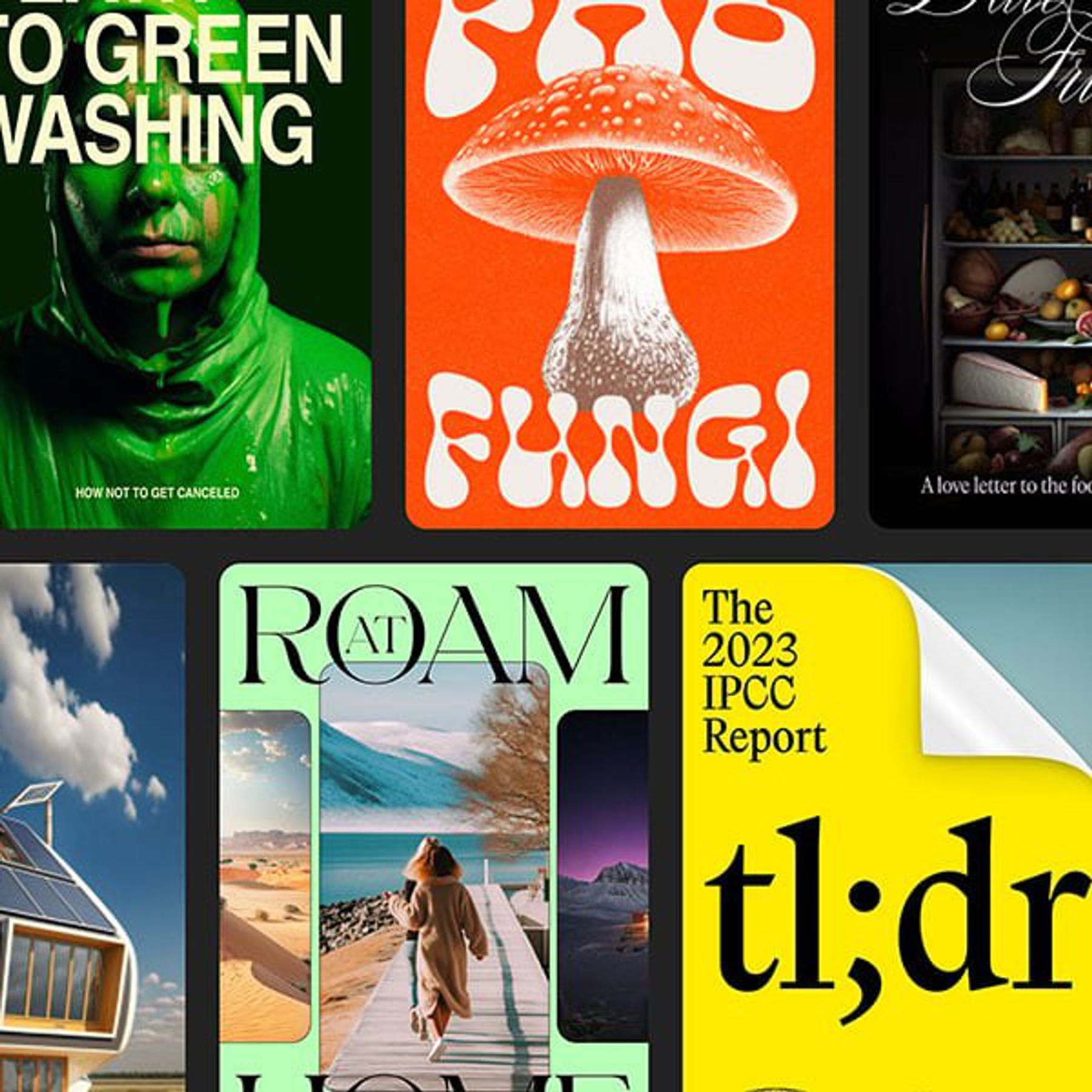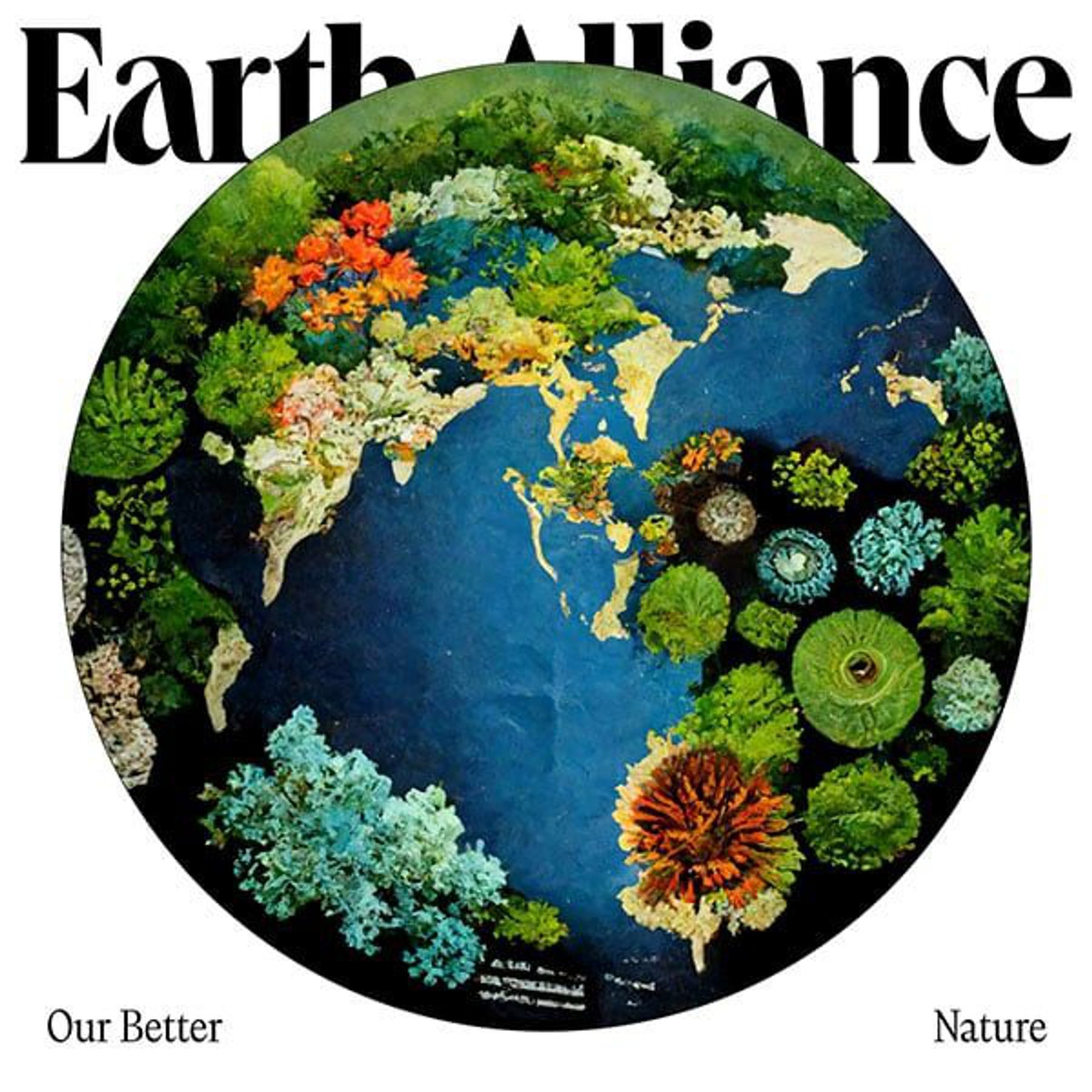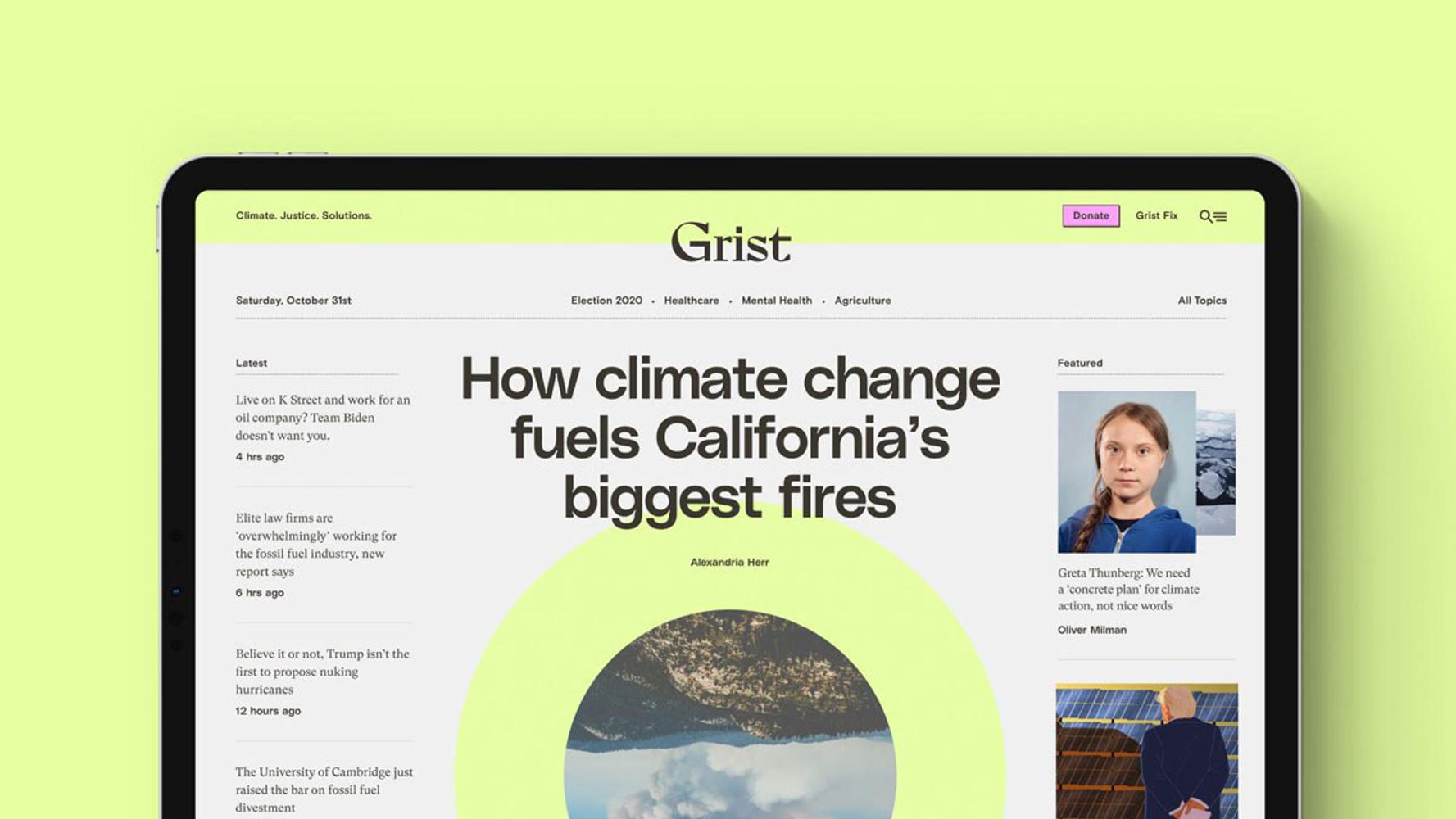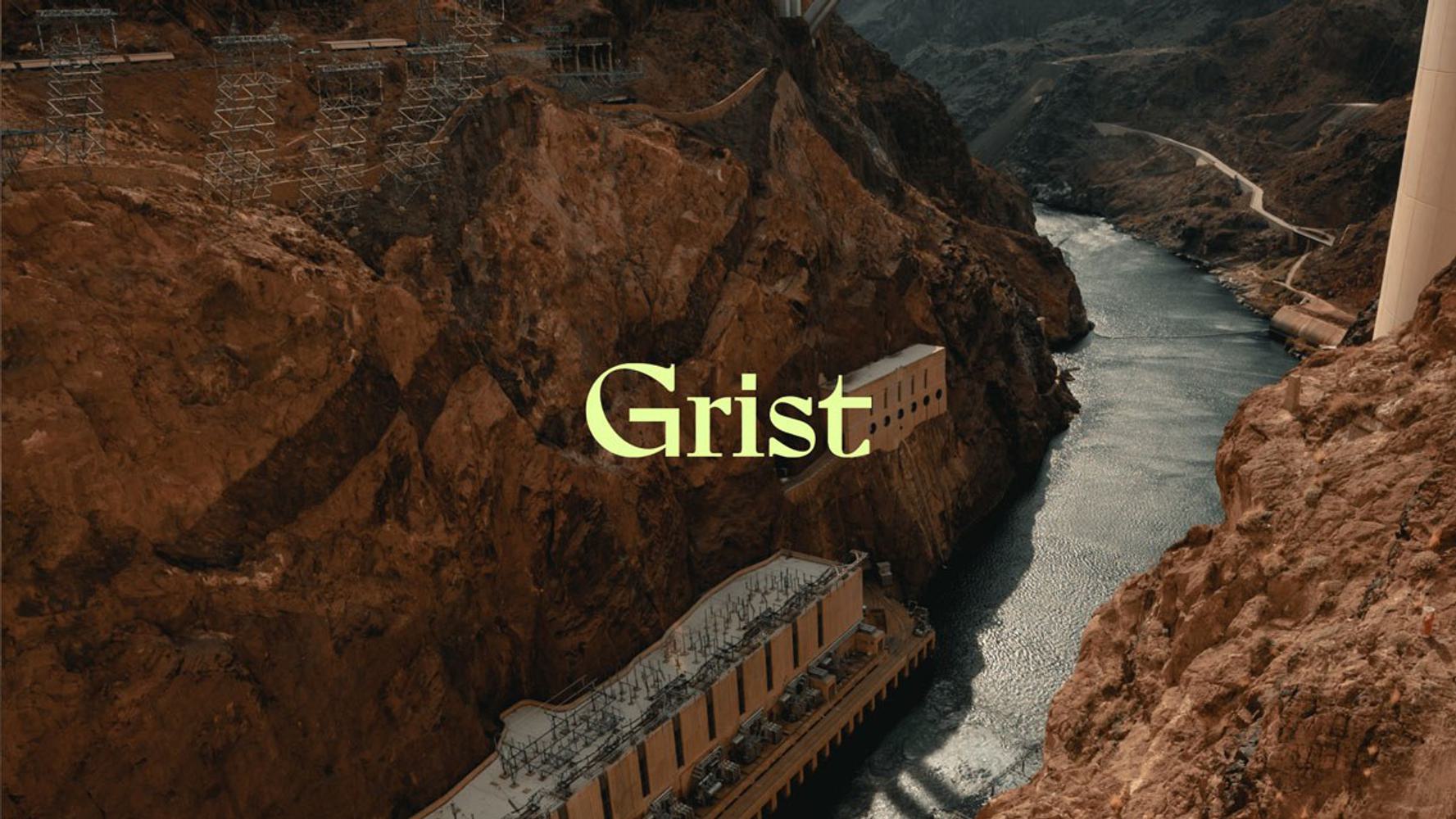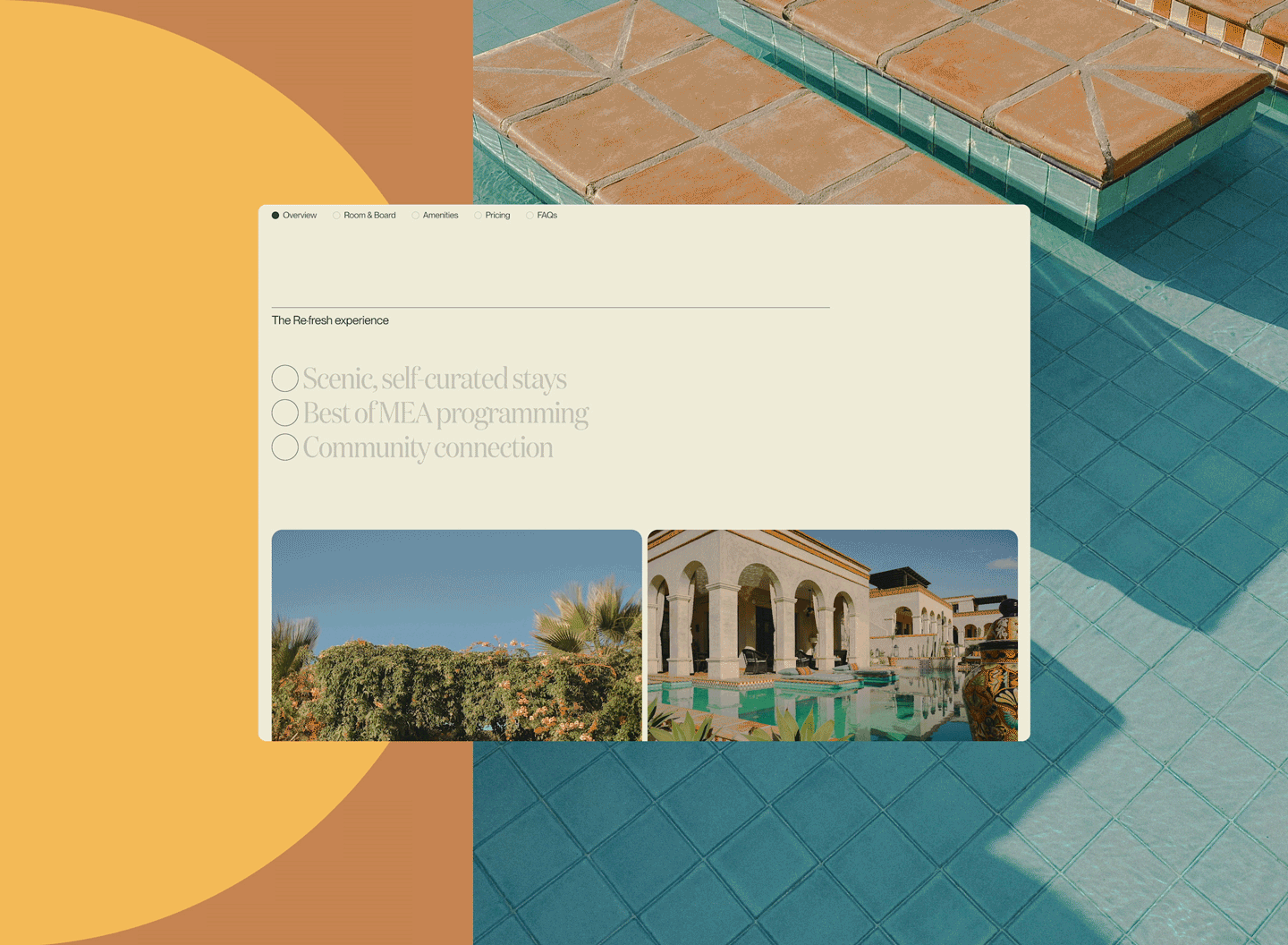Founded by climate media leader Chip Giller and philanthropist Wendy Schmidt, Agog was an unknown, category-creating startup. They needed an identity that would say a lot and do even more. An accessible, spatial-first brand would be a material demonstration of Agog’s belief in XR and its potential to spur positive change for all organizations and objectives. It would also serve as the foundation for Agog’s own original programming. Collaborating with the Agog team and XR specialists at 14islands, we developed a logo and identity system functional in both 2D and 3D contexts, defined Agog’s pioneering positioning in the XR-for-social-good space, created their new website, and developed key messaging and content.

Brand, Identity, & Platform
We dug into Agog’s ultimate purpose. At its core, above all, Agog believes in the power of human connection. We identified a few other key brand beliefs that drove every part of the branding process:
- Feeling is believing. Logic alone won’t help solve humanity’s crises. We have to feel our way forward. And empathic technology can help lead the way.
- XR can catalyze real-world change. It’s not about escaping reality. It’s about leaning all the way into it, creating space to reimagine it and inspiring and engaging people to the point of shifting the zeitgeist.
- The future is what we make—together. The future isn’t just something that happens; we all have a hand in the world we’re building.
With this base, we were able to begin building the full brand system in a meaningful way, simultaneously developing each aspect alongside the rest to ensure that the brand, in all its forms and expressions, could thrive and adapt in a quickly-changing XR space and work for users across a spectrum of technical capabilities.
Making a spatial-first system and platform meant prioritizing audience immersion and considering cinematic features like materials, sound, lighting, and motion alongside the usual logo, language, and platform. Agog needed to inhabit mobile screens and entire rooms with equal aplomb. As noted in Agog’s case study, spatial and immersive experiences are exciting because “they shift the focus from how organizations appear to how they make people feel.” A successful immersive brand would cause an emotional response and create a deeper connection with a user.

We experimented with headsets, explored interactive worlds, and thought about how we responded to specific objects, spaces, and prompts. What motivated, engaged, and excited us as we moved through these experiences? How did we want to interact with everything we encountered? A logo and shape language began to emerge.
The Agog wordmark, round and welcoming, was inspired by goggles and portholes, gateways, and mirrors. Portholes through which we view the world; gateways that connect us; and mirrors that reflect back our inner selves. It speaks to being transported, and the deep empathetic connections forged by encountering the familiar in a surreal space.
Webby Honoree
Best Website: AI, Immersive, & Games

The logo resonates in both 2D and 3D, rearranging itself and playfully reacting during interactive moments, encouraging users to push beyond the 2D canvas and enter the 3D world. This high-tech form is wrapped in organic-feeling materials. It’s familiar, and it’s not; and that contradiction formed the basis for the brand storytelling and extends into the shape language. The Agog flowers, portals to XR worlds, are both an object and a place. Artist Joseph Töreki rendered them in a wide variety of positions and materials.

Technology & Accessibility
Agog wanted to create an XR experience with as few barriers as possible. With expert help from 14islands, who consulted on spatial best practices and developed the XR web layer, we designed for all devices—including no device at all. We considered hardware like controllers and headsets along with early technology like hand gestures and eye tracking, and users can enter a 3D XR experience from the website navigation. Although the default website is flat, it gives a sense of the deeper world beyond, with floating elements and a 3D-style flower implemented with Three.js.
Our designers and developers collaborated directly in WebXR to design final materials, lighting, and colors in code. CodeSandbox helped us share prototypes, debug, and iterate easily, allowing designers to be hands-on for the final aesthetic touches of each scene, and we used Spline and Bezi for fast, low-poly resolution prototyping.
For a deep dive on the process and tools, consult Agog’s practical guide. The project goals included piloting a successful XR x brand design collaboration and sharing out learnings for use across other teams and organizations. Establishing a productive and inspiring interdisciplinary partnership was critical in the brand development process.
The Agog brand and experience manifest its premise: that immersive media can cultivate a deep sense of awe and empathy. The brand-through-digital approach resulted in an accessibly-futuristic vision of Agog, one that Agog described as achieving the “emotional, aesthetic, and practical goals of our brand.”
We’re excited to see the ways Agog helps people use XR to imagine and build a better world and brighter future. In the meantime, explore some of their impact so far—we especially admire the XR storytelling they brought to Forager.earth and the indigenous perspective they supported at the MIT Reality Hack.
Need help telling your organization’s story?
We believe a brand goes far beyond a logo—it’s a system that brings your story to life. We’d love to work together on reimagining yours.
Get in touch
